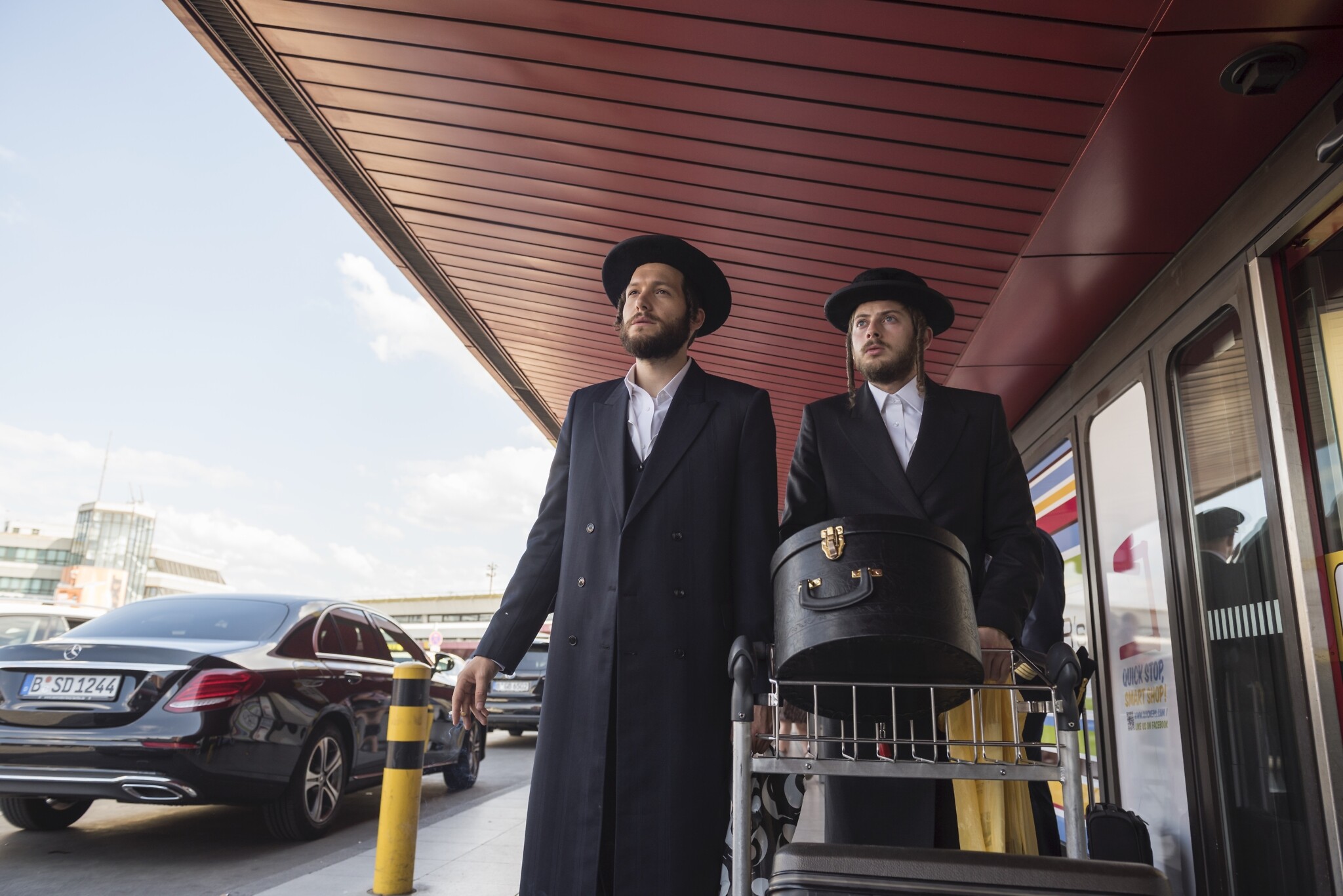
Question: 'What is Hasidic Judaism? What do Hasidic Jews believe?'
Answer:
Go to NBCNews.com for breaking news, videos, and the latest top stories in world news, business, politics, health and pop culture. Hasidic1 0 points 1 point 2 points 2 years ago The Israeli system is similar to the canadian system, where the PM is the head of a Parliament, btw Israel used to also be under British rule before 1948, but Israel today is no way under any british monarchy. Students face being held back after a year of remote learning. Pandemic-related learning loss means some parents are weighing whether their children should repeat a grade. Hasidic twitter. 596 tweets with 'אין' 577 tweets with 'און' 544 tweets with 'פון' 530 tweets with 'איז' 476 tweets with 'נישט' 390 tweets with 'וואס' 375 tweets with 'האט' 368 tweets with 'מיט' 329 tweets with 'פאר' 268 tweets with 'ווי' 246 tweets with 'דער' 245 tweets with 'זיך. Hasidic Jewish men are known for wearing long black frock coats and hats. This was the fashion among nobility in Poland, Ukraine etc. In the 18th/19th Century. The fur hat that is worn on Sabbath (Saturday) and holidays is called a 'streimel.' This hat can cost as much as $1000 or more!
Hasidic (or Chasidic) Judaism is a conservative branch of Haredi Judaism, which is itself a branch of Orthodox Judaism. Thus, Hasidic Jews are Orthodox, although they differ from Orthodox Jews in some respects. The word Hasidic comes from the Hebrew word chesed, meaning “lovingkindness.” The Hasidim are literally “those who do good deeds for others.” They are known for their separated living, their devotion to a dynastic leader, their exuberant, joyful worship, and their distinctive dress. Hasidic Jews believe that prayer and acts of lovingkindness are means of reaching God. Hasidic philosophy is less ritualistic than other branches of Judaism, and it places a greater emphasis on emotion, warmth, and inclusiveness.
chesed, meaning “lovingkindness.” The Hasidim are literally “those who do good deeds for others.” They are known for their separated living, their devotion to a dynastic leader, their exuberant, joyful worship, and their distinctive dress. Hasidic Jews believe that prayer and acts of lovingkindness are means of reaching God. Hasidic philosophy is less ritualistic than other branches of Judaism, and it places a greater emphasis on emotion, warmth, and inclusiveness.Hasidic Judaism arose in Poland about 1740 during a time of persecution against the Jews. Hasidism was founded by Rabbi Israel Ben Eliezer, also known as the Besht, short for Baal Shem Tov, meaning “Master of the Good Name.” His message was to have the consciousness of the presence of the Almighty God at all times and in all things so that even the most mundane tasks were sanctified. There was and remains a strong mystical element in Hasidic Judaism, and some Hasidic teachings come from Kabbalah.
 The Hasidic community was actually excommunicated by the Talmudic scholar Vilna Gaon of Lithuania in 1777. The Hasidic community responded by excommunicating Vilna Gaon. In the meantime, the political and economic situation in Poland had changed, and the Russian tsar controlled the Hasidim. Ultimately, the Hasidim developed a great value on being “Torah True.” Many small groups rose up within Hasidic Judaism and developed unique characteristics. After World War II and the Holocaust, many Hasidic groups migrated to America or Israel. Today, the largest of these groups is based in Brooklyn, New York.
The Hasidic community was actually excommunicated by the Talmudic scholar Vilna Gaon of Lithuania in 1777. The Hasidic community responded by excommunicating Vilna Gaon. In the meantime, the political and economic situation in Poland had changed, and the Russian tsar controlled the Hasidim. Ultimately, the Hasidim developed a great value on being “Torah True.” Many small groups rose up within Hasidic Judaism and developed unique characteristics. After World War II and the Holocaust, many Hasidic groups migrated to America or Israel. Today, the largest of these groups is based in Brooklyn, New York.
The appearance of Hasidic men particularly sets them apart. Traditionally, a married Hasidic man wears a long beard, braids of hair hanging down from his temples, a dark suit, and on the Sabbath a large fur hat called a shtreimel. The Hasidim believe that their dress proclaims that they are servants of God. It reminds non-Jews and themselves that they are part of a religious discipline that appreciates separateness.
There is probably little difference in the fundamental beliefs between Orthodox Judaism and Hasidic Judaism. There is great distinction between the two lifestyles and religious practices. The Hasidim carefully keep the Torah commandments and Talmudic instructions in all areas, even in those less suitable for modern Western society.
One area of disagreement between Hasidic Judaism and Orthodox Judaism regards the current State of Israel. The Hasidim do not believe that the nation should exist unless it is under the direct control of the Messiah. Unfortunately, they reject the idea that Jesus of Nazareth is the Messiah. “He came to his own, and his own people did not receive him” (John 1:11).
Joshua Haruni spent years documenting life in Israel’s Hasidic communities — from the Rebbe’s office to the tisch’s with thousands gathered to sing, from cheder graduations to the moments in the kitchen on Friday afternoon.
Avital Chizhik-Goldschmidt, life editor, spoke to Haruni about his forays into this community.

This interview has been edited and condensed for style and clarity.
Avital Chizhik-Goldschmidt: What brought you to photographing the ultra-Orthodox community?
My photographic interest in the Hasidic world began with my curiosity in the resurgence of belief in Kabbalah.
As a journalist, I wanted to explore how Israelis were being drawn to this esoteric belief system. The person who helped me with access to this project comes from a very prominent Hasidic family. As work progressed on the Kabbalah project, my Hasidic ‘fixer’ would suggest that I come along to various events at his community where ultimately, I built relationships which allowed me to photograph more and more of the Hasidic way of life.
The portraits are extremely intimate. How did you get in? Why were the subjects okay with your being there, photographing?
Despite being told by my Hasidic friend that I could enter and take some pictures, my habit of getting physically close to my subjects combined with an inherent suspicion of photographers was not received very well. Initially I experienced an enormous amount of hostility, spending two years turning up to communal events, uninvited and unwanted. Within a minute of entering any Hasidic event, at least one person would take me aside, telling me: “Do not photograph.” While I expected resistance, I was never entirely comfortable with the tone in which people spoke to me, which became tedious and even unpleasant; but not unpleasant enough to stay away altogether.
Interestingly, within about two years of my first interaction with Pinsk Karlin Hasidim, I received a call from the Rebbe’s beadle. He suggested that I come to the Rebbe’s apartment in Bnei Brak to photograph him lighting Hanukkah candles. You can imagine how conspicuous I felt photographing in a small room with about 30 Hasidim feeling very protective over their rabbi. After taking a few pictures, I decided to leave. As I made my way out of the apartment, the beadle ran after me and asked if I minded giving the Rebbe a lift to a bar mitzvah nearby. Naturally, I was happy to drive the Rebbe. What I didn’t expect was the number of Hasidim trying to get into my car as the Rebbe sat himself in the passenger seat. As we drove, the Rebbe began talking to me and asking me, very kindly, about what it was I was doing.
I told him about what being a photojournalist means, and that I was interested in photographing the Hasidic way of life in a way that was as honest and objective as possible. I also mentioned that a number of totally secular Jews, who had seen my photographs, had reacted in a very positive way to the point that it had encouraged them to be more proactive in their religious commitment and observance. The Rebbe showed real interest in my work.
Two days later, I received a phone call asking me if I was interested in coming to a Hanukkah tisch at the Pinsk-Karlin synagogue. I arrived a little late, just as the Rebbe was giving a talk. Sure enough, I climbed the bleachers and squeezed myself in between two Hasidim who simultaneously told me not to photograph. Incredibly however, as I settled into my seat, the Rebbe paused and looked up at me and raised his hand in a greeting of “Shulem” (Shalom). After that, the Hasidim around me told me that I was permitted to photograph, and even asked if they could hold my camera bag.

From that evening onward, I was left alone. This did not mean that every Hasid liked what I did or even approved of me being around with a camera, but it meant that the Hasidim began to relax around me, which in turn created the necessary space in which to develop relationships and to photograph more intimately.
What do you think we, the media, miss when reporting on the Haredi community?
The diversity. Most Haredim tend to be viewed as one and the same. The nuances between the various Hasidic courts or the various branches of the Lithuanian movement and Sephardi Haredim are ignored.
And the fact that they are, largely, very normal people who share the same family and communal dynamics as everyone else. I think that the media has a tendency to focus on the social difficulties experienced by these communities and the ugly behavior displayed by extremists.
Twitter Hasidic2
At an interpersonal level, I believe that secular and Orthodox Jewish communities are more exposed to each other than ever before, with more people from either way of life choosing to adopt each other’s way of life. This is illustrated by the increasing numbers of secular Israelis adopting a strictly observant lifestyle, and an increasing number of Haredim choosing to leave their communities to become secular.
Hasidic1 Twitter
With regard to Hasidic communities in particular, I think that the media has a tendency to forget the historic contexts of these communities, and ignore the layers of historic tradition which have kept the communities together.
What was the most surprising thing you discovered about the Haredi community, as you photographed?
That they are not as naïve as you think.
While Haredim value innocence, and attempt to protect the community from outside influences that they consider frivolous, the Hasidic leadership is quite aware of what goes on [outside its community’s walls] and are surprisingly very practical.
This interview has been edited and condensed for style and clarity.
